Preparatory School









This plan has been prepared as an overarching document from which all aspects of the curriculum are co-ordinated.
The purpose of this plan is to give clear guidance on the important school-wide learning to be achieved in the curriculum, and a statement of expectation that forms the basis for reviewing the quality and effectiveness of programmes and learning outcomes.
The Preparatory School is required to ensure that the curriculum is consistent with the College Charter and reflects the National Education Guidelines and the New Zealand Curriculum. The school’s curriculum also reflects the needs, resources and priorities of our community. ‘Curriculum’ is defined as all of the programmes, activities, events and experiences that take place in the College, including the interactions, materials and environment through which students learn. It is to be expected that there may be times when there is a discrepancy between planned or ‘intended’ curriculum and the ‘actual’ curriculum, depending on the opportunities and circumstances that arise.
The achievement objectives in the New Zealand Curriculum document are part of this plan.
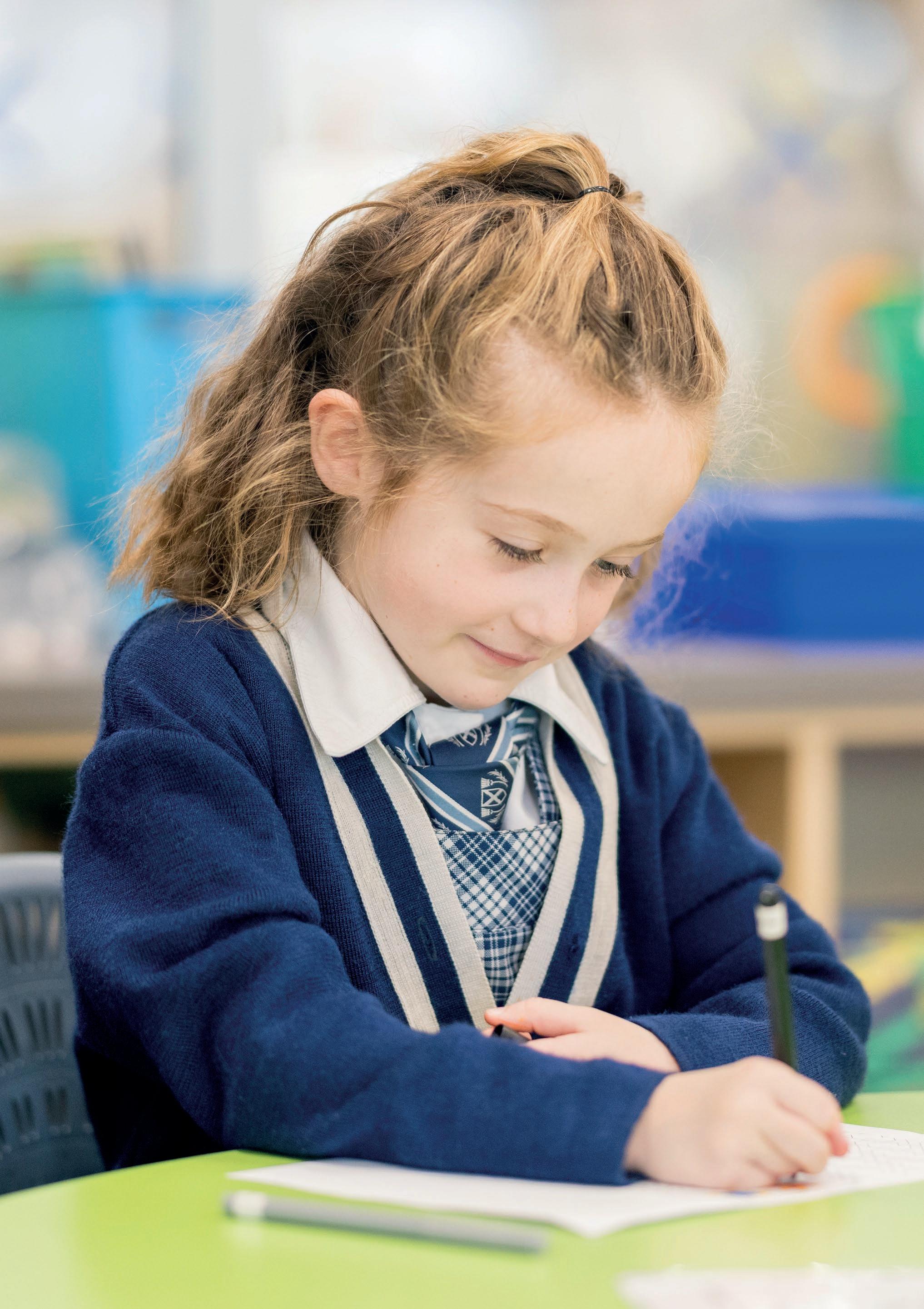
The Preparatory School staff initiated the move from syllabus-style teaching to a more personalised approach. Today, our learning environment is completely student-centred.
This means the learning is: Personalised Tailored to the individual.
The teacher guides and scaffolds the learning through quality questioning and explicit teaching. The children work in small groups with others who have the same next steps. Next steps are determined by ongoing formative assessment and observation.
This includes guiding conversations, quality inquiry, small group interactions, advances in technology, and a growth mindset to foster and encourage curiosity.
The children understand their learning intentions and next steps; learning is pursued.
And incorporates: Learning to learn Development of keys skills and strategies; future focused.
Confident, creative and versatile learners; key life skills for future employment.
Bierwirth Principal of Preparatory School and Deputy Rector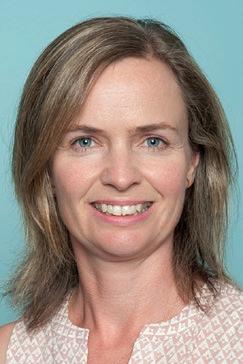
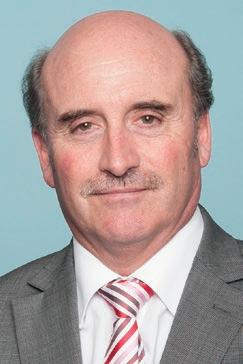
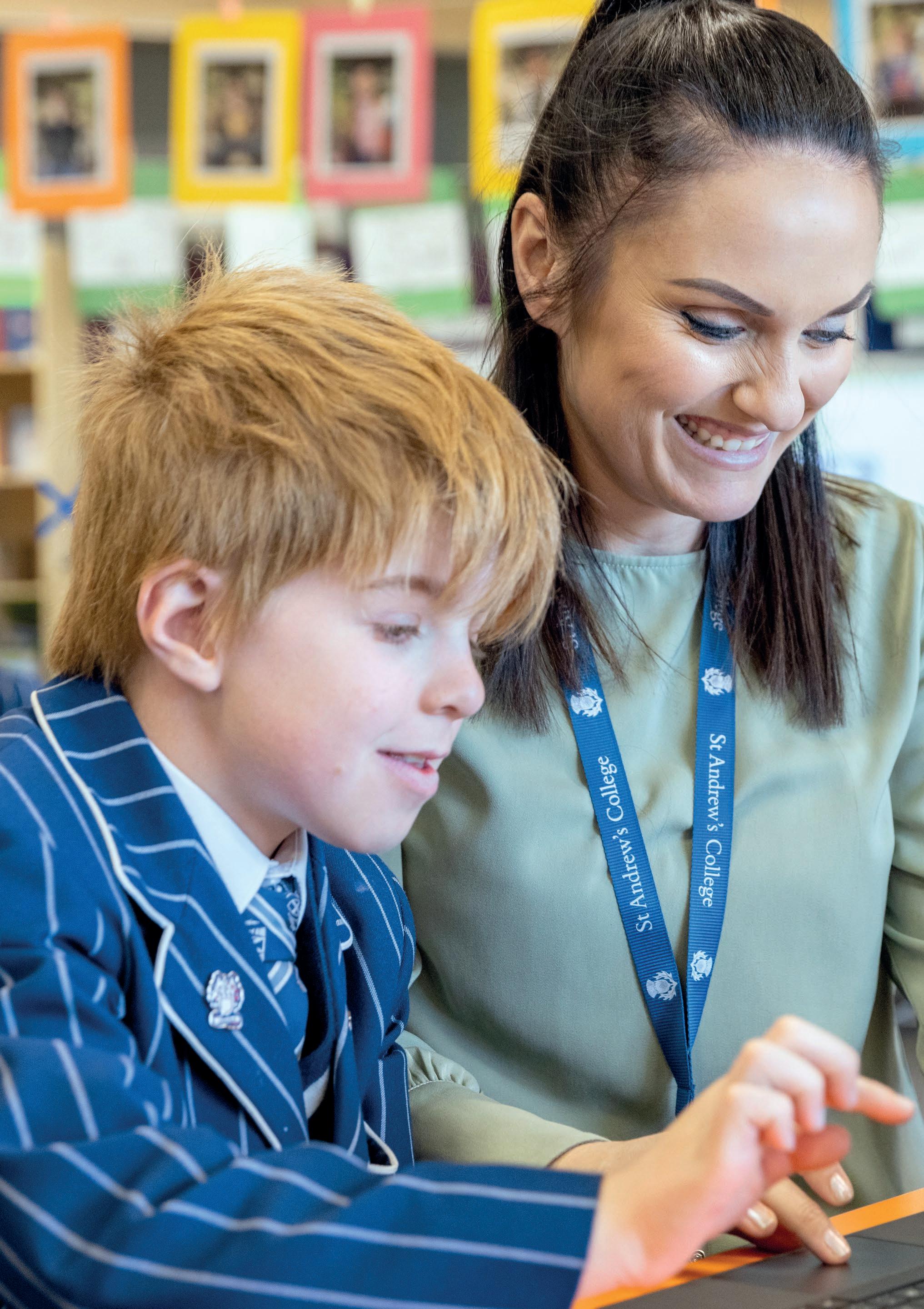
“Our vision is for young people who will be confident, connected, actively involved, lifelong learners.
The New Zealand Curriculum (NZC), Ministry of Education St Andrew’s College students will be active participants in a dynamic community of learners and inspired to become valued citizens and enthusiastic learners for life. St Andrew’s will nurture the development of talent and creative ability through a balanced exposure to academic, cultural, service, social, spiritual and sporting opportunities.
“The Curriculum supports and empowers all students to learn and achieve personal excellence, regardless of their individual circumstances.” NZC
At St Andrew’s College:
• the personalised learning environment provides students with targeted opportunities at their current level and is designed to allow students to achieve growth and success;
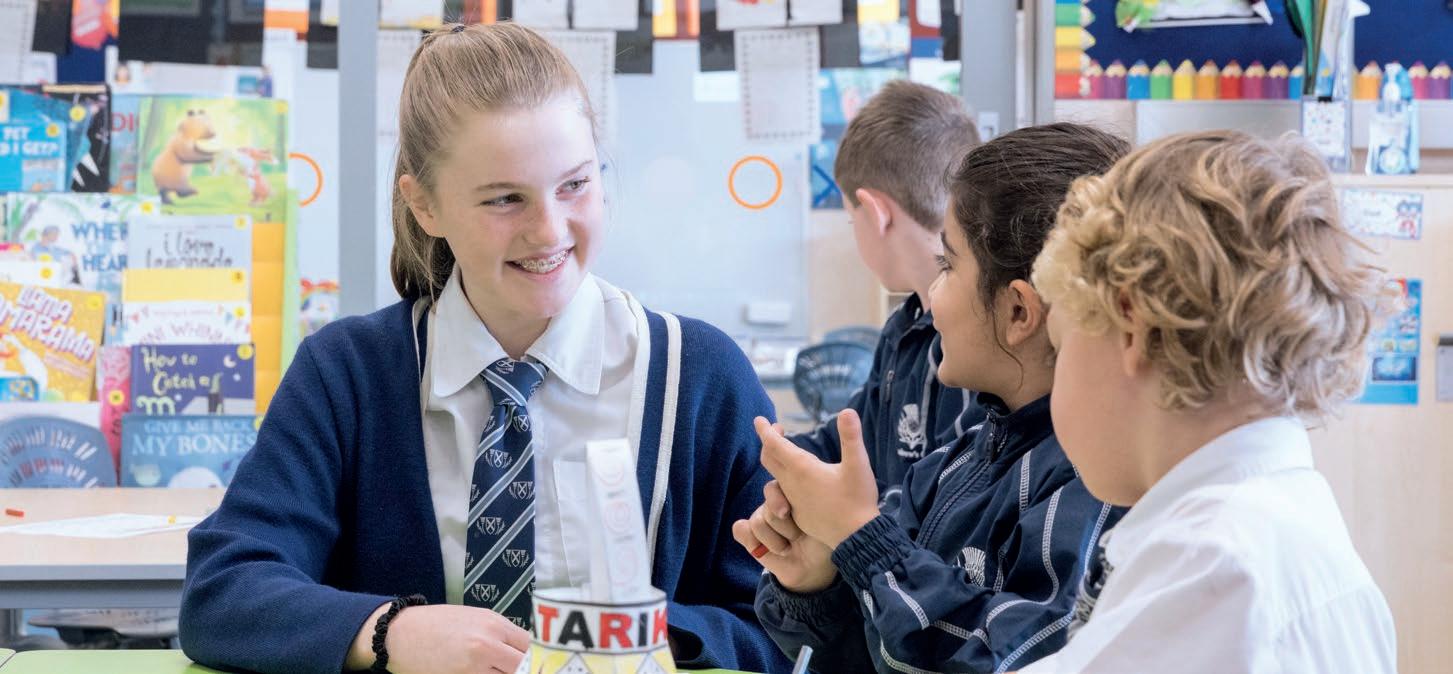
• students are given a scaffold to achieve higher order thinking and outcomes;
• the whole school publicly acknowledges the successes of individuals, groups and teams with awards and certificates through assemblies, College publications, visits to the Principal, letters to parents, and prizegivings;
• the Head of Learning Enrichment and the Head of Learning Support work with staff to ensure that class programmes meet the needs of all levels of learners in the College;
• the Goal Setting Report focuses on maximum growth and individual success where goals are set for student learning;
• students learn to take responsibility for their learning to complete set tasks and meet deadlines;
• students are involved in setting and evaluating targeted goals;
• learning intentions and success criteria are shared and able to be verbalised by students;
• students develop a high level of respect for College and Preparatory School values and demonstrate a high levelof respect in a variety of situations;
• staff have high expectations for behaviour supported by the StAC-UP expectations of Be Ready, Be Safe, Be Respectful
“The Curriculum reflects New Zealand’s cultural diversity and values the histories and traditions of all its people.” NZC
At St Andrew’s College we:
• understand and respect that different cultures make up New Zealand society;
• promote understanding, knowledge and use of Te Reo and tikanga Māori across the school;
• promote non-racist attitudes and behaviours;
• recognise that students may need to meet more than one set of cultural expectations;
• consider and respect the traditions and beliefs of cultural groups within the local community;
• build partnerships with parents and extended family.
“The Curriculum is non-sexist, non-racist, and non-discriminatory; it ensures that students’ identities, languages, abilities, and talents are recognised and affirmed and that their learning needs are addressed.” NZC
At St Andrew’s College:
• students are nurtured to find individual talents within an academic, sporting or cultural context;
• gifted and talented students are catered for through curriculum differentiation in classrooms;
• we offer additional extension programmes such as World Scholar’s Cup, Extension Writing, Robotics Club, Future Problem Solving etc.;
• we provide learning support to identified students with learning differences;
• students are extensively involved in co-curricular activities both sporting and cultural;
• a range of assessment strategies are used to inform learning and identify next steps for students;
• students receive weekly Religious Education lessons and all students attend a weekly daytime chapel;
• students are given many opportunities to participate in education outside the classroom;
• a strong pastoral and counselling team, backed by classroom programmes, supports the well-being of our students;
• StAC-UP expectations for students of Be Ready, Be Safe, Be Respectful provide common understanding and guidelines.
“The Curriculum offers all students a broad education that makes links within and across learning areas, provides for coherent transitions, and opens up pathways to further learning.” NZC
At St Andrew’s College:
• teachers develop children’s core competencies and knowledge in Literacy and Numeracy and ensure the process of
learning includes the development of skills and strategies;
• integration and inquiry learning underpin other curriculum areas such as Science, Social Studies, Health and Technology;
• ICT use is integrated in a variety of ways to enhance student learning and outcomes;
• opportunities are provided for students to share experiences and resources from Pre-school to Year 13;
• strong relationships and links exists across key transition areas and students are well supported as they move through each stage of their schooling.
“The Curriculum encourages students to look to the future by exploring such significant future focused issues as sustainability, citizenship, enterprise, and globalisation.” NZC
At St Andrew’s College:
• teachers utilise opportunities wherever possible for transfer of learning into authentic real-life contexts;
• social action is an important part of the inquiry learning process;
• students are given opportunities to develop leadership through service to the school;
• broad themes are selected to allow for exploration of global issues;
• students explore their learning and inquiry through current trends and new technologies including 3D design and printing, coding and robotics;
• students use a variety of digital tools to support their learning;
• students use the inquiry pathway model to explore areas of group and individual interest and passion.
“The Curriculum has meaning for students, connects with their wider lives, and engages the support of their families, whānau, and communities.” NZC
At St Andrew’s College:
• we operate an ‘open door’ policy in which teachers are readily accessible;
• parent education meetings are regularly offered to inform parents of new developments or programmes in the school;
• parents, past pupils, current students and staff are invited to offer support in various ways;
• connections are developed between students at different levels of the school;
• an awareness of individual and community responsibility is fostered through class programmes;
• students use community and personal resources to enhance their learning.
“The Curriculum acknowledges the principles of the Treaty of Waitangi and the bicultural foundations of Aotearoa New Zealand. All students have the opportunity to acquire knowledge of Te Reo Māori me ōna tikanga.” NZC
At St Andrew’s College:
• during their time in the Preparatory School all children are involved in programmes which reflect New Zealand’s bicultural heritage;
• the principles of the Te Tiriti o Waitangi are incorporated in classroom programmes;
• all students in Years 4–8 have the opportunity to be part of our Kapa Haka Group and paticipate in the Tūhono Kapa Haka Cultural Festival annually;

• staff integrate Te Reo and tikanga into everyday classroom learning;
• all students in Years 3–8 receive specialist lessons into Aotearoa New Zealand Histories.
“The Curriculum encourages all students to reflect on their own learning processes and to learn how to learn.” NZC
At St Andrew’s College:
• learning is made visible to students in a variety of ways;
• a range of thinking and learning strategies are specifically taught and implemented in authentic contexts;
• students are involved in setting and evaluating specific goals for their learning;
• teachers and students collaboratively develop learning intentions and success criteria;
• teachers provide specific feedback about learning and identify next learning steps.
Students will be encouraged to value:
“
• excellence, by aiming high and by persevering in the face of difficulties;
• innovation, inquiry, and curiosity, by thinking critically, creatively, and reflectively;
• diversity, as found in our different cultures, languages, and heritages;
• equity, through fairness and social justice;
• community and participation for the common good;
• ecological sustainability, which includes care for the environment;
• integrity, which involves being honest, responsible, and accountable and acting ethically; and to respect themselves, others, and human rights." NZC
St Andrew’s College is the only independent co-educational preparatory and secondary school in the South Island. We are a Presbyterian school that focuses on Christian values, and an education with outstanding teachers, facilities and a positive, caring environment. The most natural way for children to learn is in a safe family environment and this is what we offer along with a balanced and holistic education in an environment steeped in tradition and yet firmly facing the challenges of the future.
Our College values are Truth, Excellence, Faith, Creativity and Inclusivity. At St Andrew’s College we encourage, model and develop the New Zealand Curriculum values through our school charter and our own founding values.

Truth
Integrity in everything we say and do.
Excellence
Reaching beyond what people expect of us. Faith
In self, others, and our future.
Creativity
Daring to imagine; turning ideas into reality.
Inclusivity
Valuing diversity; embracing different perspectives.
As well as weekly Religious Education in the classroom, all students attend a weekly daytime chapel. The services are led by a mix of the chaplains, Rev. Paul Morrow (College Chaplain), Mrs Jillian Fenton (Preparatory School Chaplain) and Religious Education staff. The school values are profiled in services and supported by classroom programmes. One of these values is a focus each term.
Supporting our teaching of values is StAC-UP. StAC-UP expresses our values through explicit expectations for students. It underpins all interactions with students, colleagues and the community and guides our response when approaching situations of conflict or difficulty. It enables students, staff and parents to feel safe and cared for in their learning community. StAC-UP consists of the following core expectations which ensures that our school is a productive happy and safe place for everyone.
Be Safe – inside, outside and online.
Be Ready – to learn in all situations.
Be Respectful – towards others and yourself.
“Key Competencies are the capabilities people need in order to live learn and contribute as active members of their communities. They are critical to sustained learning and effective participation in society and work.” Education Gazette

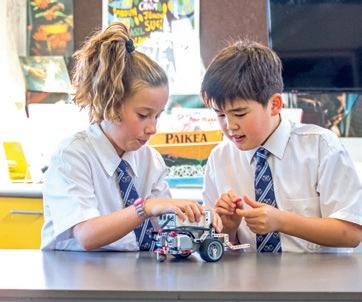
The Key Competencies (KC) are relevant to all learning areas and activities. They know no subject boundaries. They are developed simultaneously with all content areas of the Curriculum. Our school developed Key Competencies have been developed by staff and students and are displayed prominently in each classroom. Staff and students reflect on these throughout all aspects of College life. The Key Competency statements are commented on twice a year through student reports.


(KC – Thinking)
• is curious;
• asks questions;
• is creative;
• thinks for themselves.
(KC – Using Language, Symbols and Texts)
• understands information;
• shares information in a variety of ways;
• communicates appropriately.
(KC – Participating and Contributing and Relating to Others)
• takes on different roles;
• thinks about the ideas of others;
• is compassionate.
Self
(KC – Managing Self)
• is independent;
• is reflective;
• shows self-control;
• has a positive attitude.
The Preparatory School curriculum is developed under the guidelines and philosophy of the New Zealand Curriculum and takes into consideration the special nature of St Andrew’s College. It takes as its starting point a vision of our young people as lifelong learners who are confident and creative, connected, and actively involved. It includes a clear set of principles on which to base curriculum decision-making. It sets out values that are to be encouraged, modelled, and explored. It defines five key competencies that are critical to sustained learning and effective participation in society and that underline the emphasis on lifelong learning.

The Curriculum identifies the principles for all learning and teaching programmes in New Zealand schools. The principles are based on the premise that the individual student is at the centre of all teaching and learning.
The Preparatory School Learning Pathways documents reflect the eight learning areas and principles, values and key competencies as outlined in the New Zealand Curriculum, and are based on developing specific learning outcomes taken from the Achievement objectives. Programmes take note of the special character and culture of the St Andrew’s College community. Subjects included are: English, Mathematics and Statistics, Science, Social Sciences, The Arts, Health and Physical Education, Languages, and Technology.
Co-ordinated Learning Pathways for Mathematics and Statistics, English and Inquiry are used by the staff. These Learning Pathways cover Levels 1 to 5 of the Curriculum and give guidance to staff on areas such as long-term planning, Curriculum coverage, differentiation and assessment. They follow a schedule of review and renewal.
Teacher planning includes: long-term plans developed from the above whole College Learning Pathways with achievement objectives translated into unit plans; a clearly displayed timetable and planning of specific learning outcomes to make the purpose of classroom programmes clear. Planning reflects the needs of the class as determined by careful ongoing evaluation of the students.
The curriculum budget is managed by a curriculum committee and chaired by the Deputy Principals of Preparatory School. Selected budgets still remain under individual control but topics and contexts included in the whole school plan receive priority resourcing and development. The librarians record and collate all resources within the school.
“The primary purpose of assessment is to improve students’ learning and teachers’ teaching as both student and teacher respond to the information that it provides.” NZC
At St Andrew’s College we gather assessment information in a variety of forms, from informal observation and note-taking to using standardised tools. Assessment information is used to:
• create the most appropriate learning experiences for students;
• provide feedback to students;
• identify the next learning steps;
• improve the achievement of individual students and groups;
• modify teaching programmes;
• evaluate the success of teaching and learning;
• inform strategic planning and ongoing professional learning;
• provide information about the quality of the learning;
• evaluate achievement, disparity and barriers to learning.
The following assessment procedures are used to inform learning and teaching:

Diagnostic: (Levelling against national data, annual tracking)
A variety of tests and assessments are completed and analysed at the beginning of the year and wherever applicable, to identify across the College, potential talents and needs for extra help. Within the classroom, such assessment will inform the teaching and learning strategies and resources, and may also occur at the start of a unit.
Formative assessment checks on student progress during the course of a unit of work to find gaps in knowledge and skills, misconceptions, remedial and extension needs. Formative assessment involves a wide range of activities for both the students and teachers including pre and post testing, e-asTTle, anecdotal notes, running records, work samples, conferencing, oral performance and more. Formative comment is given by the teacher both verbally and in a written form. Formative assessment work is collated in an online student portfolio.
Summative: (Beyond diagnostic)
Summative assessment is used at times in a limited way to meet specific requirements.
Student portfolios are a valued and integral part of the children’s learning and achievement. They provide a format for students to record their work, goals and achievements, reflect on their learning and share their learning with a wider audience.
For all students in Years 1–7, the portfolio is stored via a program call See-Saw. This allows teachers and students to upload current examples of work and for parents and family to view and comment. As students move through the school, they have increasing ownership over the samples chosen. At Year 8, students share their learning via OneNote.
The portfolio is an assessment, recording and reporting tool.
The following recording and reporting procedures are used to convey progress and achievement from teacher or student to parent.
Goal Setting Report:
The Goal Setting Report contains information around student progress towards Curriculum Expectations and is sent home in Terms 1 and 4. It is followed by learning conferences.
In Term 1 the content comprises:
• a summary of initial testing and data collected for Mathematics and Literacy;
• individual next learning steps for Mathematics and Literacy;
• individual Key Competency related goals.
In Term 4 the content comprises:
• a summary of end of year testing and data collected for Mathematics and Literacy;
• a summary comment for Mathematics and Literacy including next steps where appropriate.
Key Competency Report:
The Key Competency Report is sent home at the end of Terms 2 and 4.
The content comprises:
• a summary of student progress towards individual learning goals in Mathematics and Literacy;
• specialist staff assessment of skills, knowledge and behaviour during specialist lessons;
• teacher comment around Key Competencies;
• a record of academic and co-curricular achievements and participation (Term 4).
The College has an open door policy and encourages parents to make contact with staff whenever they feel a need. Staff are proactive in contacting parents as required.
Following an initial period of individual diagnosis and information gathering by classroom teachers, learning conferences are held at all class levels by the end of Term 1. This is a time to discuss the Goal Setting Report, initial data and the learning going forward.
A second round of learning conferences occurs after mid-year reports have gone home.
Mathematics including Numeracy:
Mathematics is a tool for everyday life. It is a whole network of concepts and relationships which provide a way of viewing and making sense of the world. It is used to analyse and communicate information and ideas, and to tackle a range of practical tasks and real-life problems.
It is our aim to develop:
• a positive attitude towards mathematics and an awareness of the fascination of mathematics;
• competence and confidence in mathematical knowledge, strategies and concepts;
• an ability to solve problems, to reason, to think logically and to work systematically and accurately, transferring new learning into meaningful contexts with flexibility of mind;
• perseverance, initiative and an ability to work both independently and in co-operation with others;
• an appreciation of the importance of sharing mathematics by discussing, explaining and reporting.
• students who can create meaning for themselves and others when speaking, writing and presenting;
• students who can fully access all areas of the curriculum;
• effective citizens in society.
Inquiry Pathway (includes Social Science, Science, Technology and Health):
“Inquiry-based learning is a constructivist approach, in which students have ownership of their learning. It starts with exploration and questioning and leads to investigation into a worthy question, issue, problem or idea. It involves asking questions, gathering and analysing information, generating solutions, making decisions, justifying conclusions and taking action.”
Based on definitions from Sharon Friesen www.galileo.org/inquiry-what.html
Inquiry involves a process of exploration, questioning, making discoveries, and testing the reliability and validity of these discoveries to create new understanding.
It is our aim to:
English: “English is the study, use, and enjoyment of the English language and its literature, communicated orally, visually, and in writing, for a range of purposes and audiences and in a variety of text forms. Learning English encompasses learning the language, learning through the language, and learning about the language.” NZC
It is our aim to develop:
• effective oral, written and visual communicators (who can think deeply and critically);
• students who understand the information they receive from listening, reading and viewing;
• provide students with the opportunity to pursue learning in a real context;
• develop their skills in all aspects of literacy, creative and critical thinking, effective communication and high productivity;
• explore, gather, organise and present information in order to see the relationships and links between their learning and to use these to make sense of their world.
Students receive one session a week of Spanish teaching from Years 1–7. At Year 8 students are introduced to French and Japanese. These classes are taken by specialist teachers. All students receive tuition in basic Te Reo Māori from their classroom teacher.
Students attend specialist lessons for Visual Art, Dance and Drama, and Music. Where possible the content and context of these lessons are integrated into classroom inquiry units. These classes are taken by specialist teachers.
In alternate years all Year 7–8 students take part in a school production.
The aim of Physical Education (PE) is to provide a range of experiences which will assist in the development of long-term, self-sufficient physical well-being, thereby fostering self-esteem, mental awareness and social well-being.

Students attend one session a week with a specialist PE teacher; this is followed up by a lesson with the classroom teacher.
Students in Years 7–8 attend one session a week of Materials Technology. Students also attend two semesters of Food Technology lessons during their time in Years 7–8.
Science is integrated into inquiry learning throughout the school year. Some topics however are treated as stand-alone Science units in order to cover the depth of teaching and learning required at higher levels. The Preparatory School science lab is used for regular practical science from Years 6–8.
A summary of curriculum content and planning
1. Curriculum
Accountability procedures for the Curriculum Plan.
2. Personnel Staff performance review and development.
The purpose of review is to reflect on what has been and to plan for moving forward.
The Curriculum Review is intended to review the performance (success) of the Preparatory School’s curriculum delivery, content and assessment. This is part of an ongoing accountability process involving the following:
• curriculum and learning audit;
• Annual Plan and Annual Report;
• syndicate planning and professional development;
• assess to learn strategies;
• annual integrated learning planning;
• school-wide assessment plan;
• staff performance review;
• Professional Learning Groups in the areas of Literacy, Numeracy, Inquiry, e-Learning and Community Connections.
The process of staff performance review includes a review of:
• school expectations – as written in the Annual Plan;
• position description/specific responsibilities;
• annual development objectives both personally derived and school based;
• teacher as inquirer;
• appraisal connector with online sharing of journals, observations and professional development;
• Professional Standards and Code of Professional Responsibility.
